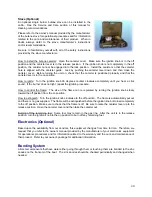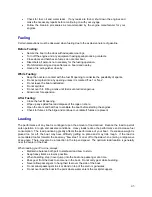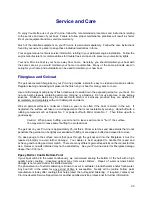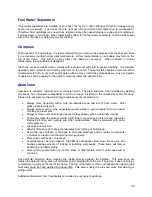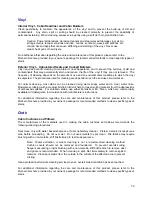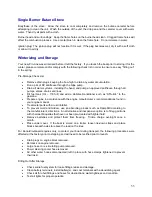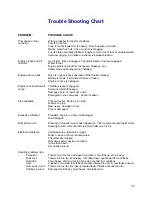
51
Stainless Steel
Stainless steel is used for bow rails and deck fittings on your Pro-Line. Stainless steel is not completely
free from corrosion attack. It is NOT stain or rust proof. When used in contact with chloride salts, sulfides
or other rusting metals, stainless will discolor, rust or even corrode. The degree of surface oxidation is
directly affected by local atmosphere and saltwater concentrations. All metals are subject to corrosion in
some environments. The grain structure of stainless, when modified by welding processes, has
increased susceptibility to micro-corrosion (invisible to the unaided eye) and cracking.
Our most helpful recommendation is that you give your stainless steel hardware the same attention that
you would use to maintain other materials on your boat. Regular fresh-water washing with a mild
abrasive cleaner will keep your stainless bright and beautiful.
Always clean stainless frequently with soap and water. Any cleaner safe for glass is
usually safe for stainless
Always remove rust spots as soon as possible with a stainless, brass, silver or chrome
cleaner. Irreversible pitting will develop under rust that remains on stainless for any
period of time.
Always use a cleaner, like a good car wax, for added beauty and protection.
Never use coarse abrasives like sandpaper or steel wool on stainless as these can cause
rusting.
Never clean with acids or bleaches.
Never leave stainless in contact with iron, steel or other metals, which cause
contamination leading to rust or corrosion.
Always protect with a wax, especially around welds to guard against micro-corrosion,
cracking and rust spots.
Additional information from Romac and G. G. Schmitt and Sons is included in your owner’s package.
Corrosion Protection
Spray all electrical connections with a good quality corrosion guard annually and whenever an electrical
connection is repaired or replaced.
If you moor your Pro-Line in salt water for extended periods, be sure to check the transom mounted anti-
corrosion anode often for operation. Check the electrical connections (green wire) on all metallic fittings
with anode for conductivity with an ohmmeter. Make sure the anode surface is exposed and not caked
with corrosion and scale. Renew the anode if it is more than 50% eroded. Your motor and/or drive unit
have a sacrificial zinc anode to mitigate the effects of electrolysis which causes corrosion. Maintain this
anode in accordance with the maintenance schedule in your engine manual.
Cabin/Companionway Door
To clean the acrylic door, rinse with fresh water to remove as much grime as possible. Use bare hands
with plenty of water so you can feel any grit and avoid grinding it into the surface as you dislodge it.
When all material that may scratch the surface is removed, use a soft clean cloth with a non-abrasive mild
detergent and fresh water. Rinse and blot dry with a clean dry chamois.
Grease and adhesives may be removed with kerosene, hexane or white gas (not gas you burn in your
boat, car, or lawnmower). Never use solvents such as acetone, silicone spray, benzene, carbon
tetrachloride, dry cleaning fluid, lacquer or paint thinner, or any chlorinated solvent on acrylic since they
may dissolve the material.




